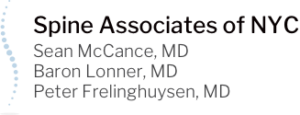What is a Lumbar Herniated Disc? Causes, Symptoms, and Treatment Options
With nearly 80 percent of the general population experiencing back pain at some point in their lives, it is important for patients to understand the source of their discomfort in order to expedite relief. Herniated discs—sometimes referred to as slipped or ruptured discs—are one of the more serious causes of lower back pain. Herniated discs can lead to severe pain, and even to numbness and weakness in the legs, if left untreated. Today, I will further explain the root causes of the pain associated with herniated discs, common symptoms, and a few simple treatment options. What is a herniated disc? In between your spinal vertebrae are discs that work to absorb the shock created from day-to-day tasks. These round discs are composed of a tough outer ring and a soft, jelly-like center. Either injury or general wear and tear from aging can cause these discs to tear, or herniate, and allow the soft center to rupture and displace into the spinal canal. This shift can irritate spinal nerves and causes the discomfort and pain common known as sciatica. Who is most at risk? Herniated discs are most commonly seen in males ages 30 to 50. As you many remember,

